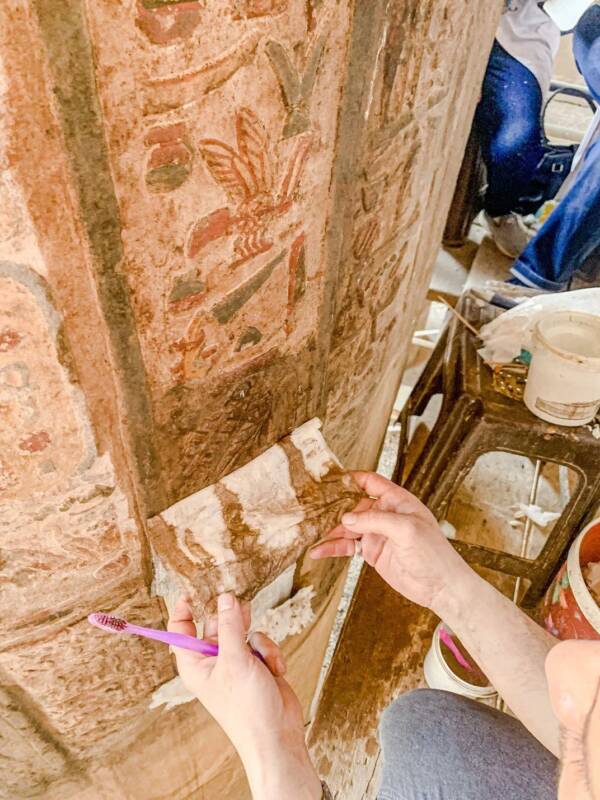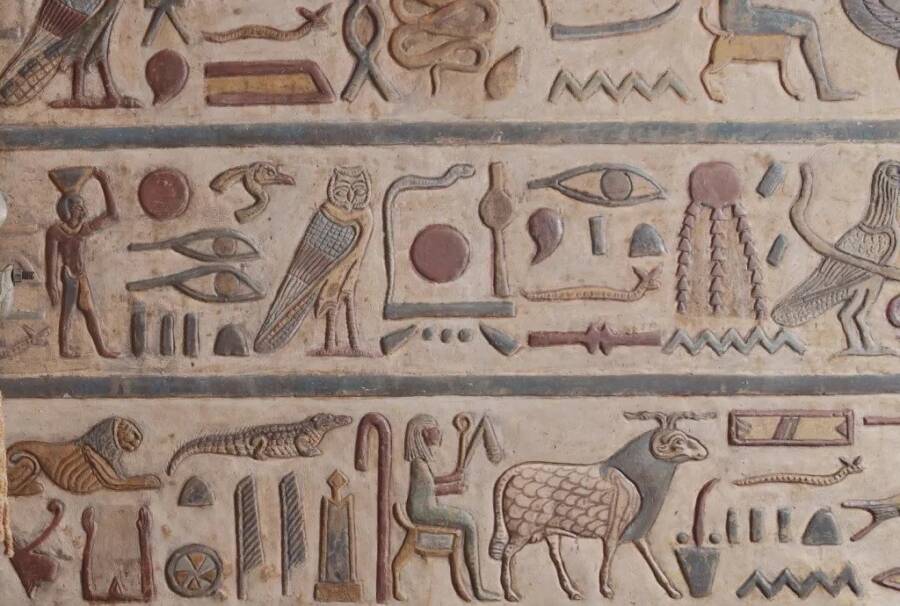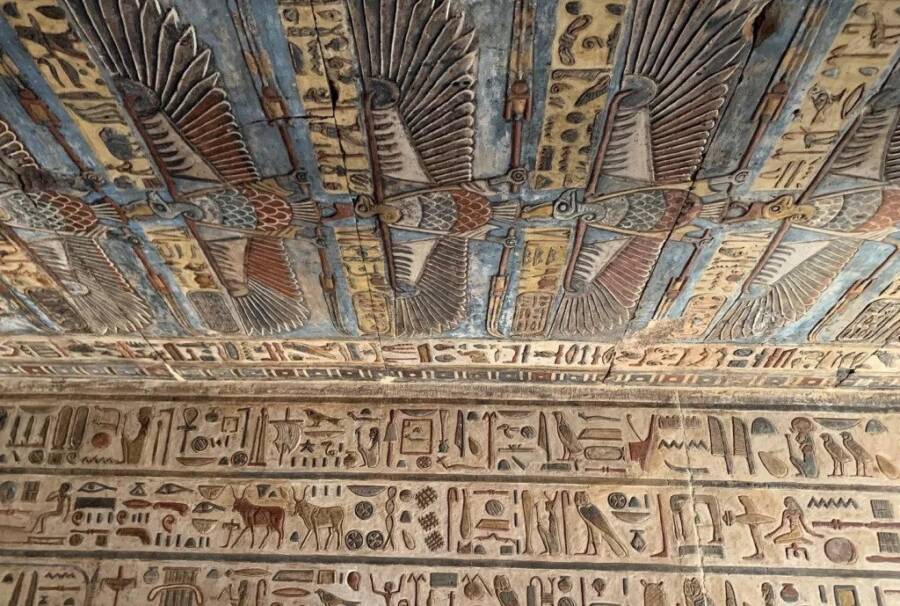The frescoes at the temple in Esna, Egypt, were made some 2,200 years ago, and the temple itself was used for four centuries.
Egyptian Ministry of Tourism and AntiquitiesOne of the colorful frescoes reveal by the renovation project .
For century , shite , soot , and bird poop pile up on the wall of the Temple of Khnum at Esna . But now , a squad of German and Egyptian archeologist is working to fastidiously clean the situation , exposing the stunning and vivacious frescoes of goddess that long lay to a lower place .
“ temple and ancient depictions of the idol were often painted in brilliant colors , but these have normally faded or even vanish totally as a termination of external influences , ” explained Christian Leitz , a professor and director of the Department of Egyptology at Germany ’s University of Tübingen and a member of the team that helped clean the temple , in astatement .

Egyptian Ministry of Tourism and AntiquitiesOne of the colorful frescoes revealed by the restoration project.
allot toSmithsonianmagazine , Leitz and his team used toothbrush and alcohol to remove C of build - up from the synagogue wall , starting in 2018 . Their touchy work was slowly but for sure rewarded as the team bring out 46 portrayal of Egyptian goddess portrayed in vibrant color .
Leitz explain that the reliefs depict two Egyptian goddess in particular : the Upper - Egyptian vulture goddess Nekhbet and the Lower - Egyptian serpent goddess Wadjet .
Both , the university statement explain , are depict as vultures with outspread fender . But Nekhbet has the livid crownwork of Upper Egypt , while Wadjet has the head word of a cobra and wear down the crown of Lower Egypt .

University of TübingenA German-Egyptian team used alcohol and toothbrushes to carefully clean the ancient frescoes, which had been preserved in part by layers of soot and bird poop.
The “ extraordinary [ matter ] here are the colors , ” Leitz spout to Live Science .
University of TübingenA German - Egyptian team used alcoholic beverage and toothbrushes to carefully cleanse the ancient fresco , which had been preserve in part by layers of lampblack and bird poop .
According toLive Science , the temple frescoes were created some 2,200 years ago . The temple itself was used for about 400 years , between the reign of the pharaoh Ptolemy VI ( 180 B.C.E. to 145 B.C.E. ) and the Romanist emperor Decius ( 249 to 251 C.E. ) . Today , only the vestibule — which is 121 feet long , 66 feet wide , and 49 feet grandiloquent — survives . Researchers suspect that it may have been a recent summation to the temple .

Egyptian Ministry of Tourism and AntiquitiesHieroglyphics at the Temple of Khnum.
The synagogue itself , turn up along the Nile River , was originally dedicated to the ram - headed fertility rate god Khnum . harmonise toHeritage Daily :
“ Khnum was one of the early - knownEgyptian deities , originally the god of the reservoir of the Nile and the creator of the bodies of human child ( which he made at a ceramicist ’s wheel ) . He was later described as having work the other deities , and he had the titles ‘ Divine Potter ’ and ‘ Lord of created affair from himself . ' ”
The temple was also dedicated to Khnum ’s consorts Menhit and Nebtu , his Logos Heka , and the goddess Neith . Menhit was a goddess associated with war , Heka a god associated with magic and medicine , and Neith the patroness of the metropolis of Sais .

Egyptian Ministry of Tourism and AntiquitiesAbout half of the temple ceiling and eight of its 18 columns have been cleaned.
Egyptian Ministry of Tourism and AntiquitiesHieroglyphics at the Temple of Khnum .
Though the temple sits about 30 invertebrate foot below street level today , it was extensively document in the 1960s and 1970s by Gallic Egyptologist Serge Sauneron . ArtNewsreports that he took Federal Reserve note of the temple ’s engravings but did n’t see the frescoes , which were covered with grunge and animal excrement .
“ For the first time we can see all the decorative factor in sex act to one another , ” Leitz say in the University of Tübingen command . “ This was out of the question merely with Sauneron ’s publication . ”
Egyptian Ministry of Tourism and AntiquitiesAbout half of the temple cap and eight of its 18 columns have been cleaned .
The fresco were n’t the only matter that the squad found . In plus , they unveil Greek lettering dating back to the reign of Roman Emperor Domitian ( 81 - 96 C.E. ) . ArtNews reports that the inscriptions seem to memorialise the temple ’s date of completion in both ancient Egyptian and Coptic calendars .
But as exciting as the find at the temple in Esna is , researchers still have more work to do . They plan to translate the dedication they see and study the connexion between the inscriptions in the tabernacle and the depictions on the temple bulwark .
The University of Tübingen also notes that the squad only cleaned a part of the synagogue . They ’ve worked on about one-half of the roof and eight of the tabernacle ’s 18 column . As such , it ’ll take more time — and careful cleaning — to see how this striking temple once appeared to ancient Egyptians .
After study about the beautiful Egyptian fresco unearthed in Esna , look through these stunningphotos of Egypt before the British occupation . Or , enjoy thesefascinating fact about ancient Egypt .